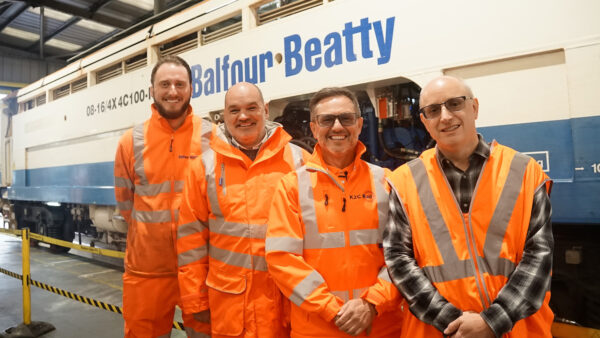
The Jurong Rock Caverns, Southeast Asia’s first underground oil storage facility, in Singapore (Credit: JTC)
In the most populated places on earth, cities are starting to build in the only direction left – downwards. Kristina Smith reports.
A hundred metres beneath Jurong Island, Hyundai Engineering and Construction is carving out five huge caverns as tall as nine-storey buildings in Singapore’s sedimentary rock. The $950m underground structure will be Southeast Asia’s first subterranean oil storage facility. By the time it’s finished in 2014, 1.47 million cu m of space will be available for sale. Just as important, it will leave 60 precious hectares of land on top for industrial development.
The Jurong Rock Caverns project is an example of a new trend to build downward. It’s a trend that may grow as the world’s cities get more crowded and space runs out. With its population of over 5 million sharing a meagre 710 sq km of land, Singapore is the third most densely populated place on earth, according to the UN.
“We have to explore new concepts and innovative ideas,” says a spokesperson for JTC, the government agency in charge of industrial infrastructure, and the Jurong Rock Caverns. JTC also has plans to build an underground science park. If built, it would provide 30 storeys for research laboratories, offices and a data centre.
In Hong Kong – the world’s fourth most densely populated place – feasibility studies in 2011 and 2012 have identified more than 400 public facilities which could be relocated underground.

In Mexico City an ambitious proposal called the Earthscaper (pictured right) – a 300m-deep inverted pyramid containing a museum, retail, offices and even residential space, put forward by architects Bunker Arquitectura – has captured popular imagination in a city where commuters from ever-expanding suburbs can face a three-hour journey to work.
Clashes
Han Admiraal, chair of the International Tunnelling Association’s Committee on Underground Space (ITACUS), believes that while the developed world has started building down, the new cities of Asia and Africa will benefit most from it.
All cities should be developing underground masterplans, he says. “These new mega cities which are developing in Africa should be considering using the underground from the word go,” says Admiraal. “If planners start thinking about how underground space can be used as they are planning the cities, the high costs often associated with developing underground space can be avoided.”
In China, home to the most rapid process of urbanisation in the history of the world, poor coordination of underground development – a ‘first come first served’ approach – has meant clashes. Planned metro lines in Shanghai had to be sunk deeper due to building foundations which extended lower than the 16m expected. City planners have started regulating underground space: now nearly 20 cities in China have what you might call “depth plans” governing layout, use, and timescale of development.
The very first city to create an underground masterplan was Helsinki in Finland. It already has 400 underground structures and 200 more have been registered. It’s easier there because the government owns much of the land and the city is sitting on granite bedrock. But underground masterplanning can’t be left only to planners, says Admiraal. Planners and geologists will need to work together.
That sinking feeling
Apart from the constant challenge of water, the biggest barrier to building underground is cost. It involves the unknown, which always means more risk. Even in Singapore, where land is at such a premium, JTC estimates that its underground science park will cost 50% more than a comparable above-ground facility. But it doesn’t have to involve a massive outlay of state funds if you can get property developers to pay.
Montreal, which boasts the world’s biggest underground network, the RESO, spent very little public money developing the 32km of shop-lined tunnels which connect offices, metro stations, museums and banks. Jacques Besant, an urban planning consultant and former planner for the city of Montreal, said that the RESO worked because the council put the right legal and financial framework in place in the 1960s, and each developer had to construct its own portion of tunnel.
The legal framework is important: in 2001, Japan introduced a new law which said it could develop underground space which was more than 10 metres below existing deep foundations to allow it to build utility and metro tunnels more easily. Singapore, meanwhile, is developing its first underground masterplan, and is looking at underground space for warehousing.
This won’t be quick. “Underground development in Singapore is still in its relatively early stages,” says the JTC spokesperson. “In order for Singapore to be able to make use of underground space, R&D is necessary to help us develop the knowledge and capabilities to build and operate underground facilities more efficiently, safely and cost-effectively.”
For more international stories go to the CIOB’s global construction website GCR











Comments are closed.